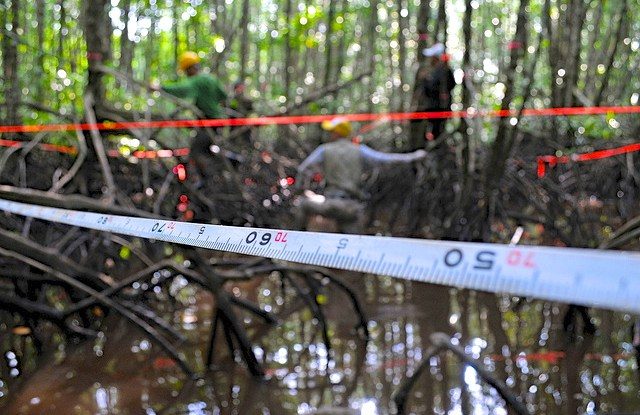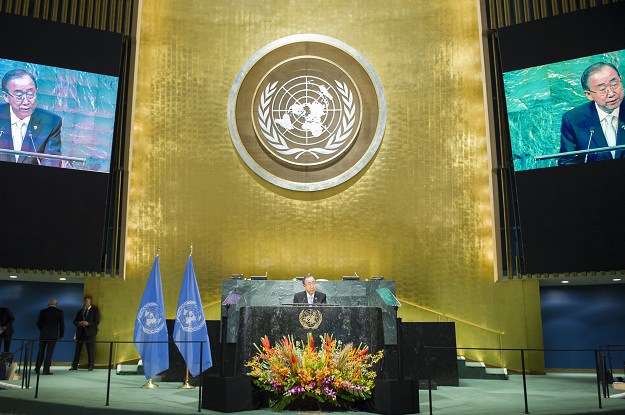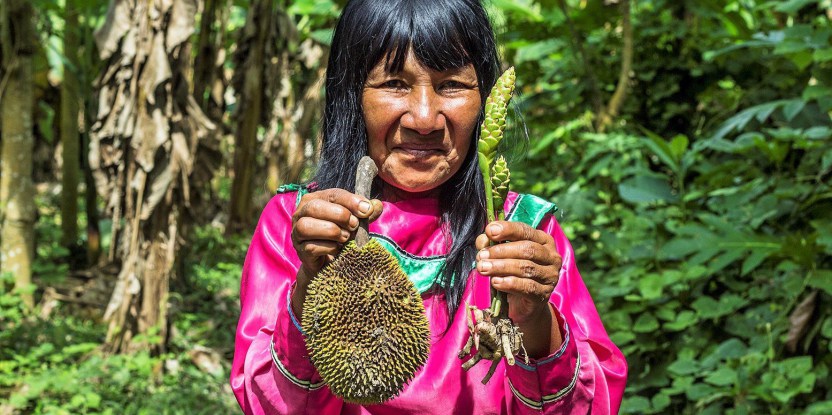
BOGOR, Indonesia — Countries can measure their progress in REDD+ by assessing their policy environment, even if supportive governance structures are not in place and they aren’t ready to measure their carbon emission reductions, a recent study shows.
The idea of REDD+ (Reducing Emissions from Deforestation and forest Degradation) is to encourage developing countries to keep their forests standing by placing a financial value on the carbon in trees, with payments from wealthier countries made based on measurable results.
Carbon emissions from deforestation and forest degradation account for more than 10 percent of the global total, so cutting these emissions is essential for mitigating climate change and its dangerous impacts.
But despite the emphasis on measuring carbon, keeping trees standing begins with getting governance and policies into shape, argue the study’s authors, and that process can — and should — be measured too.
“For a country to succeed with REDD+, it needs to have a suitable governance context and policies in place,” said lead author Kaisa Korhonen-Kurki, of the Helsinki University Centre for Environment and the Center for International Forestry Research (CIFOR).
“So it’s important to measure policy indicators to see whether a country has the policy environment that is needed to keep the trees standing and so store the carbon,” she added.
“And we see that, in countries where the political leadership is committed to REDD+, even where forest governance has deficits, policy progress is still possible and observable — and hence measurable.”
SETTING THE CONDITIONS
To identify which policy factors and conditions are necessary if REDD+ is to be formally established at the national level, Korhonen-Kurki and her co-authors conducted a qualitative comparative analysis of 12 forest-rich developing and emerging countries.
They found that only three of the countries — Brazil, Indonesia and Vietnam — had established comprehensive policies targeting transformational change. Their progress was attributed to certain enabling factors, or characteristics, in their institutional setting and policy arena — characteristics that the other countries can strive to establish.
What does ‘national ownership’ look like, or ‘effective legislation’, or ‘transformational coalitions’?
The first enabling factor, common to all three countries, was to have already initiated some kind of policy change before REDD+ got under way. For example, Vietnam had launched a nationwide Payments for Forest Environmental Services program in 2008.
The absence of previous changes does not, however, preclude other countries from establishing REDD+ policies, Korhonen-Kurki pointed out — “it will just take them more time,” she said.
But previous policy change alone was not sufficient, the research showed.
“Brazil and Vietnam, for example, have also key features of effective forest legislation, policy and governance, and Indonesia is under severe pressure from a shortage of forest resources,” Korhonen-Kurki said.
“The combination of these factors with previous policy changes made the difference.”
The next question they looked at was whether the people involved in the policy arena — the policy actors — can use the institutional setting to achieve change. The analysis indicates that countries are more likely to succeed if they have national ownership of REDD+ (that is, the country itself is leading the process rather than, for example, international actors) and if coalitions of policy actors that target transformational change are active.
MEASURING CHANGE
These research findings can guide policymakers and program implementers on where they might look when assessing their own progress and seeking to move more quickly, the article suggests.
This is where measurable indicators come in.
“Evaluating policy progress is rather different from measuring carbon. With carbon, it’s easy to quantify,” said Korhonen-Kurki.
“But it can be hard to define the factor itself. What does ‘national ownership’ look like, or ‘effective legislation’, or ‘transformational coalitions’?”
A proposed indicator for national ownership, for example, is that “REDD+ policy formulation is led by national political institutions” rather than by international actors such as foreign experts and donors. An example of one of the indicators for effective legislation is “effective implementation and enforcement mechanisms.”
For each indicator, the absence is not assessed as irrelevant, but is measured and included. For example, the absence of transformational coalitions may be marked by the dominance in media and policy circles of “coalitions supporting the status quo and business as usual.”
The study also sets out indicators for the overall outcome of established policy. As with any individual factor, several indicators must be present.
“The reality is complex, and outcomes are always the sum of multiple issues,” Korhonen-Kurki said.
“In the real world, there’s never one single factor that can lead to an outcome, because everything changes with the context. The context and the combination of different factors always matters.”
The authors’ desire to capture the context in the 12 study countries determined their choice of methodology, which is set out in a related working paper published by CIFOR, “Qualitative comparative analysis (QCA): An application to compare national REDD+ policy processes.”
For more information on the topics discussed in this article, please contact Maria Brockhaus at m.brockhaus@cgiar.org.
CIFOR’s research on REDD+ forms part of the CGIAR Research Program on Forests, Trees and Agroforestry.
We want you to share Forests News content, which is licensed under Creative Commons Attribution-NonCommercial-ShareAlike 4.0 International (CC BY-NC-SA 4.0). This means you are free to redistribute our material for non-commercial purposes. All we ask is that you give Forests News appropriate credit and link to the original Forests News content, indicate if changes were made, and distribute your contributions under the same Creative Commons license. You must notify Forests News if you repost, reprint or reuse our materials by contacting forestsnews@cifor-icraf.org.

